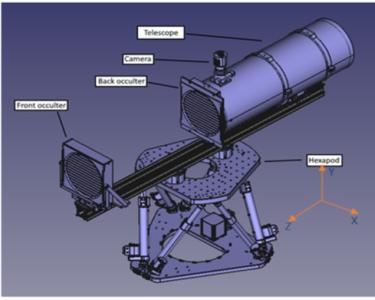Efficient straylight characterisation and verification techniques for Earth Observation instruments

The objective of this activity is to find innovative solutions for the cost and schedule effective verification and characterisation of straylight requirements for different EO instruments.
The straylight characterisation and verification of EO instruments are quite challenging due to the stringent requirements regarding straylight and radiometric accuracy typically set for such instruments. The straylight verification generally requires an input source as an extended black (Lmin)/white(Lmax) scene with a very sharp and high contrast transition between the dark/bright region. The realisation of such a source is not straightforward as it requires careful design so as not to introduce additional straylight by its own. The difficulty of a straylight characterisation is linked to the need for high accuracy and schedule efficiency. Achieving a high accuracy can be difficult as the dynamic range of the instrument may not be sufficient for the straylight characterisation and techniques will have to be used that can virtually enhance the dynamic range. Schedule is problematic as straylight needs typically to be characterised for all specified spatial and wavelength samples leading to a long duration of the test. The main tasks of this activity would be the study of methods for the accurate and schedule efficient verification and characterisation of straylight and the design and breadboarding of a straylight verification and characterisation test bench that could be scaled for the testing of various EO instruments like MTG/Metop-SG/S4/S5. The proposed solution shall include the illumination system (tuneable source, extended source for example) and the associated baffling concept that is able to minimise the straylight of the test-bench itself. The solution shall be adaptable for both Earth (in-field) and Sun (out-of-field) straylight characterisation over a wide range of FoV. The spectral straylight characterisation shall be possible with the help of tunable laser or narrow band filters with broad band source. After fabrication, the breadboard shall undergo several validation tests (uniformity, transition sharpness, induced straylight).
